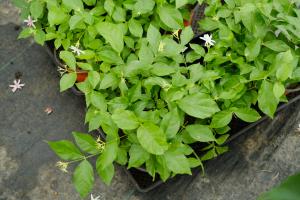Introduction
Water processing plants are important to ensure access to clean water for human consumption. They are responsible for the purification and treatment of water, making it safe for drinking and other uses. Finding the right location for a water processing plant requires careful consideration of several factors. In this article, we will explore the different criteria that might make for locating a water processing plant.
Proximity to Water Sources
One of the most important criteria for locating a water processing plant is the proximity to water sources. The plant should be located close to a consistent and reliable source of water. This could be a river, a lake, or an underground aquifer. The water quality of the source should also be considered, as the cleaner the source, the easier and cheaper it is to treat.
However, the proximity to water sources should also not be too close, as potential contamination from industrial or agricultural activities in the surrounding areas could negatively affect the quality of water.
Accessibility to Transportation
Another important factor to consider when locating a water processing plant is its accessibility to transportation. The water treatment plant must be easily accessible for the delivery of chemicals used in the treatment process, for the removal of waste products, and for the dispatch of purified water to the community.
Accessibility to transportation ensures that the water treatment process is efficient and reduces the overall costs of production. It also ensures that the plant operates without any interruption, which would otherwise impact the entire community's supply of clean water.
Land Availability and Topography
Land availability and topography are also essential factors to consider when locating a water processing plant. The site's topography should be stable and secure, and the land should be flat and large enough to accommodate current and future plant expansions.
The location should be situated on a geographically stable area, away from areas prone to earthquakes, landslides, or sinkholes. The land use around the plant should also be zoned for industrial development, eliminating any potential conflict with the surrounding communities.
Environmental Considerations
Environmental considerations are another essential factor to consider when locating a water processing plant. The plant should be located away from sensitive habitats, such as wetlands or protected areas. The water treatment process should not negatively impact the environment or cause further harm to flora and fauna.
The plant should operate under strict environmental standards, and the company should be transparent with the community about the plant's impact on the environment. Environmental considerations cannot be ignored in the selection of a site for a water processing plant.
Local Economic and Social Factors
Local economic and social factors also come into play when selecting the site for a water processing plant. The plant should be located near a community where the supply of clean water is in high demand. The employment opportunities provided by the plant should also be considered.
The company should also be responsible and ethical, providing fair compensation and ensuring the safety of its employees. The plant's social impact on the surrounding communities should be positive, and the company should take a proactive approach to social responsibility programs in the area.
Conclusion
The criteria that might make for locating a water processing plant are essential to consider carefully. A successful water processing plant requires an optimal location that ensures a consistent supply of clean water, accessibility to transportation, availability of land, environmental considerations, and local economic and social factors. It is essential to consider all these criteria to ensure a sustainable future supply of clean water for communities.

 how many times do yo...
how many times do yo... how many planted tre...
how many planted tre... how many pine trees ...
how many pine trees ... how many pecan trees...
how many pecan trees... how many plants comp...
how many plants comp... how many plants can ...
how many plants can ... how many plants and ...
how many plants and ... how many pepper plan...
how many pepper plan...





























